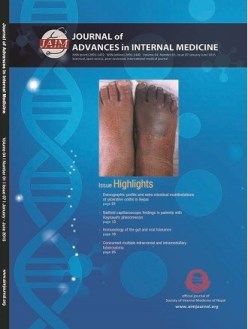Immunology of the gut and oral tolerance
DOI:
https://doi.org/10.3126/jaim.v4i1.14176Keywords:
Gut, oral tolerance, commensal gut flora, immune privilege collapse, inflammatory bowel diseaseAbstract
The pathogens and harmless antigens from the bacterial flora and food constantly expose the mucosal surface of the gastrointestinal tract. The mucosal epithelial cells act not only as a physical barrier, but also as a local immune system, which plays a vital role in defense and self-tolerance. The gut mucosal immune system comprises several compartments: Peyer’s patches and lymphoid follicles in the colonic mucosa, and lymphocytes in the lamina propria and intraepithelial lymphocytes. Peyer’s patches mediate antigen uptake via specialized epithelial cells (M cells) and are rich in B cells for class switching into IgA-secreting cells. IgA secretion is one of the primary defenses against pathogens at mucosal surfaces. The lamina propria contains a high proportion of activated and memory T cells that allows rapid immune response against pathogens. In the physiological situation, mucosally encountered antigens induce tolerance of lamina propria and intraepithelial lymphocytes by modified antigen presentation, antigen-induced anergy, or deletion of T cells, or regulation of effector T cells by regulatory or suppressor T cells. Costimulatory molecules mediate cellular interaction and induce regulatory cytokines. While the absence of gut immune privilege to food results in food allergy, the consequences of immune privilege collapse to commensal gut flora is Inflammatory Bowel Disease (IBD). Hence, the knowledge of the homeostatic regulation of the intestinal immune system paves the way for the development of the new immunomodulatory drugs in the therapy of IBD. Moreover, the generation of immune mediated cells through orally fed antigens could be the area of research in the treatment of certain autoimmune diseases.
Journal of Advances in Internal Medicine 2015;04(01):16-24
Downloads
Downloads
Published
How to Cite
Issue
Section
License
Copyright (c) 2015 Journal of Advances in Internal Medicine

This work is licensed under a Creative Commons Attribution 4.0 International License.
This license enables reusers to distribute, remix, adapt, and build upon the material in any medium or format, so long as attribution is given to the creator.




